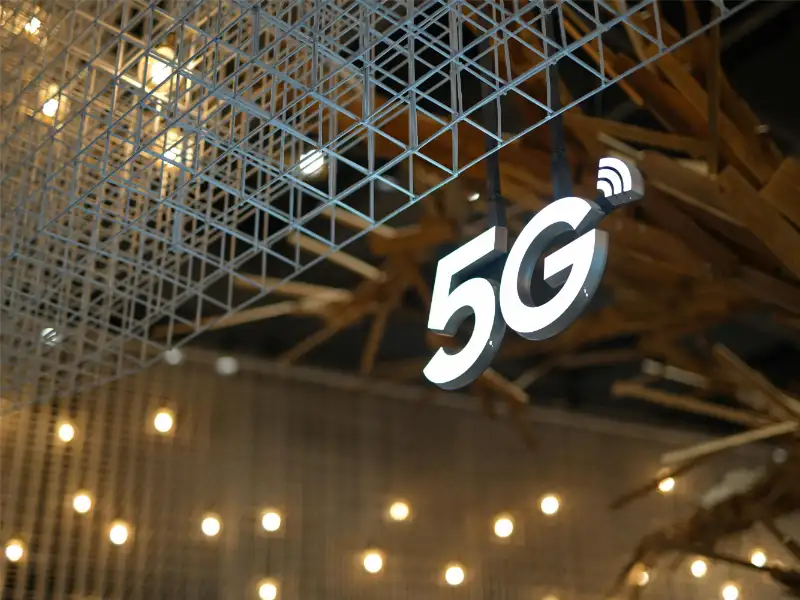- One of the most noticeable differences between 4G and 5G networks is their speed and bandwidth capabilities.
- Another significant difference between 4G and 5G lies in their capacity to handle a large number of connected devices simultaneously.
The transition from 4G to 5G represents a significant leap forward. These generations of mobile networks have transformed how we connect, communicate, and interact with digital services. While 4G laid the groundwork for high-speed mobile internet, 5G promises even faster speeds, lower latency, and greater capacity to support emerging technologies like the Internet of Things (IoT) and autonomous vehicles.
Speed and bandwidth
One of the most noticeable differences between 4G and 5G networks is their speed and bandwidth capabilities. 4G networks typically offer download speeds averaging around 20-30 Mbps (megabits per second), with peak speeds reaching up to 100 Mbps in ideal conditions. This level of speed has enabled high-definition video streaming, seamless web browsing, and faster downloads on mobile devices. In contrast, 5G is designed to deliver significantly faster speeds and lower latency. Initial 5G deployments can achieve peak download speeds ranging from 1-10 Gbps (gigabits per second), which is up to 100 times faster than 4G. This dramatic increase in speed not only enhances user experiences but also supports applications that require real-time data transmission, such as augmented reality (AR), virtual reality (VR), and 4K video streaming.
Imagine downloading a full-length HD movie in seconds or experiencing ultra-low latency in multiplayer gaming without any lag. These scenarios illustrate the transformative potential of 5G in delivering faster and more responsive connectivity compared to its predecessor.
Also read: Fibocom unveils revolutionary 5G RedCap module
Also read: 5G Network acquires Security Shift to boost cybersecurity services
Latency and response time
Latency refers to the time it takes for data to travel from the sender to the receiver and back again. Lower latency translates to quicker response times and improved reliability, crucial for applications like online gaming, video conferencing, and autonomous vehicles.
4G networks typically have latency ranging from 30 milliseconds (ms) to 50 ms. While adequate for many applications, this latency may cause noticeable delays in real-time interactions. However, 5G aims to achieve ultra-low latency, reducing response times to as little as 1 ms. This near-instantaneous responsiveness opens up possibilities for technologies that demand rapid data transmission, such as remote surgery, industrial automation, and real-time language translation. For example, in healthcare, 5G could enable surgeons to perform delicate operations remotely with precise control, facilitated by minimal latency. Similarly, autonomous vehicles can benefit from instantaneous communication with infrastructure and other vehicles, enhancing safety and efficiency on the roads.
Capacity and connectivity
Another significant difference between 4G and 5G lies in their capacity to handle a large number of connected devices simultaneously. As our world becomes increasingly interconnected through IoT devices, smart cities, and wearable technology, the demand for network capacity continues to grow.
4G networks support up to 2,000 devices per square kilometer, making them suitable for urban areas with dense populations. However, as the number of connected devices increases, 4G networks may experience congestion and reduced performance.
5G addresses this challenge by significantly expanding network capacity, supporting up to 1 million devices per square kilometer. This scalability is achieved through advanced technologies such as network slicing and massive MIMO (Multiple Input Multiple Output), which optimise bandwidth allocation and enhance spectral efficiency. With the development of technology, in a smart city environment, 5G can efficiently manage traffic lights, public transportation systems, and environmental sensors, ensuring seamless connectivity and real-time data exchange across numerous devices. This capability paves the way for innovative applications in smart grids, healthcare monitoring, and environmental monitoring, where reliable connectivity is essential for timely decision-making and operational efficiency.
While 4G laid the groundwork for mobile broadband connectivity, 5G represents a transformative leap towards a more connected and technologically advanced future. By delivering faster speeds, lower latency, and greater capacity, 5G not only enhances user experiences but also enables a wide range of new applications and services that will redefine industries and societies worldwide.

